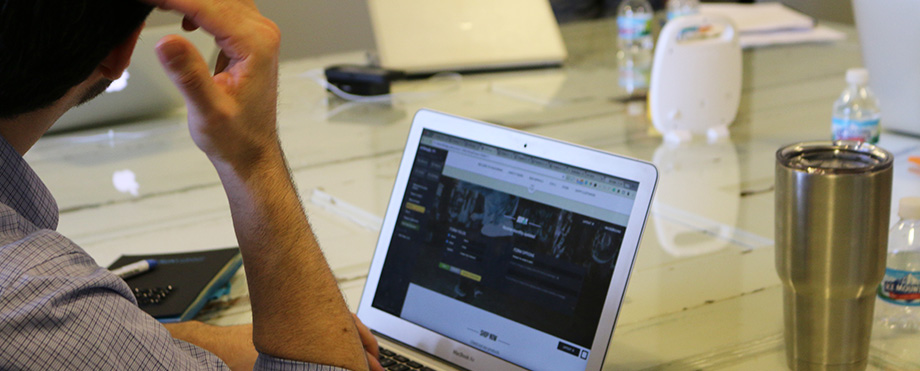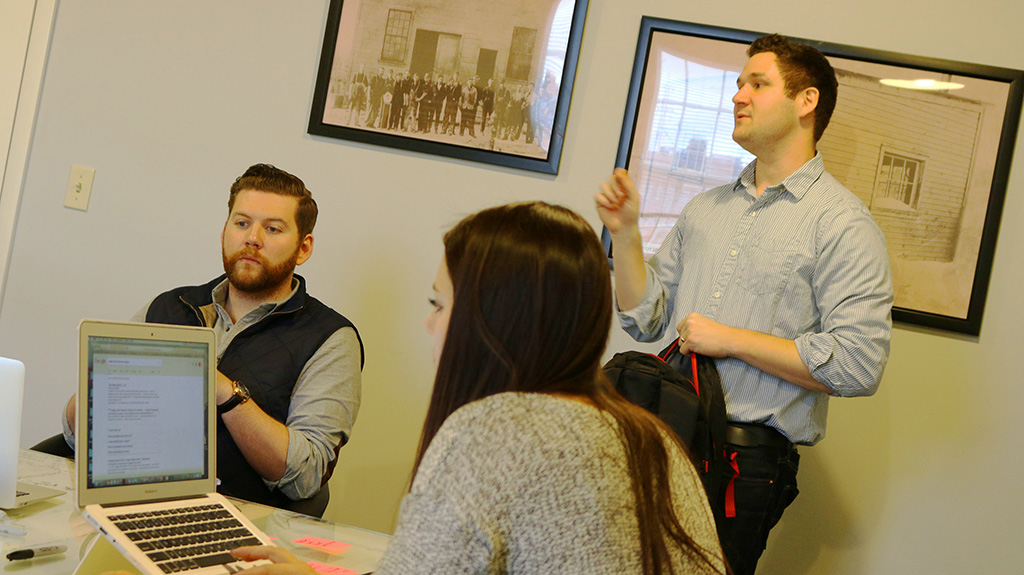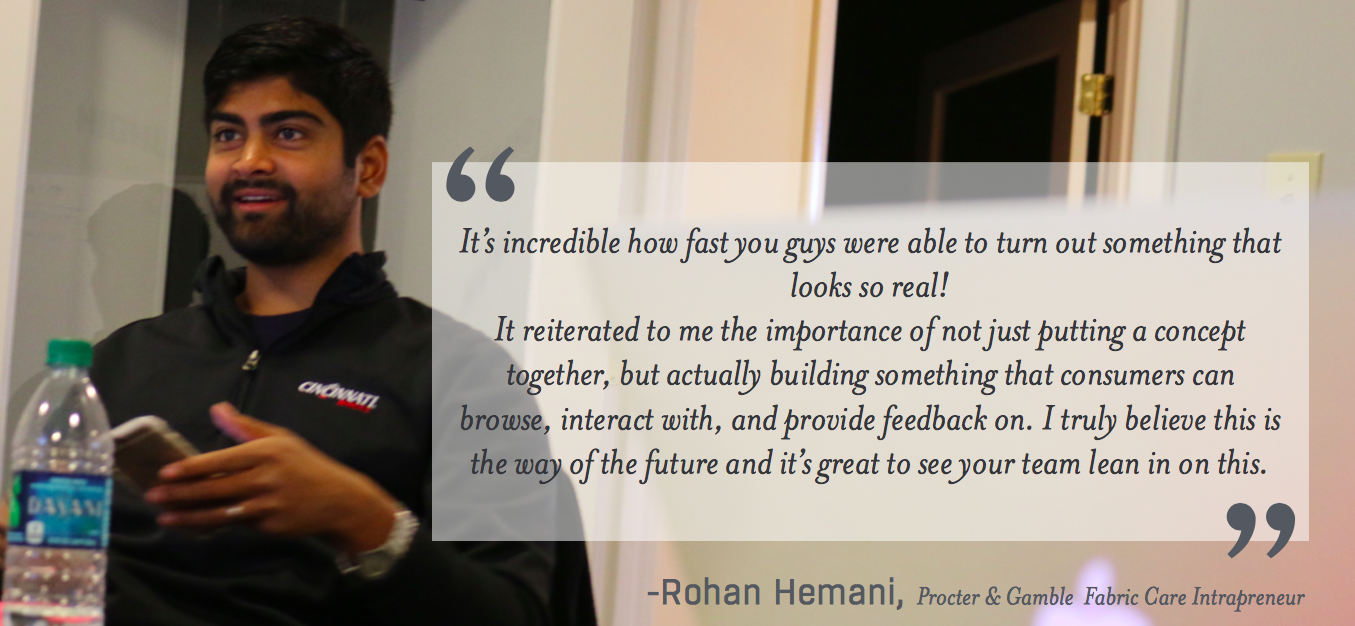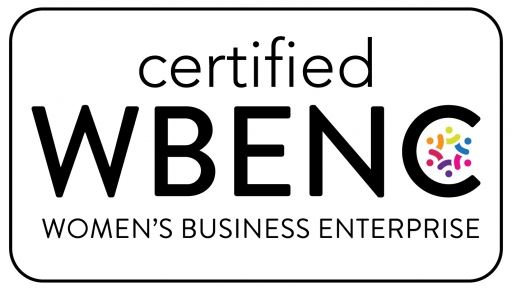Identify Cornerstone Assumptions
Our team guides you through a holistic, structured approach to identify and prioritize the cornerstone assumptions for your innovation. We combine your expertise with customer experience mapping, guerrilla research, and other startup-inspired techniques to arrive at clearly articulated, testable cornerstone assumptions.
Stop Theorizing; Start Prototyping
Data shows that it’s hard for consumers to accurately predict what they’ll do when thinking about disruptive innovation. To solve for this, we build a prototype centered on a cornerstone assumption, expose real-world consumers to the prototype, and observe/measure behavior. This provides a clarity of data and insight that can’t be learned with a paper concept. Plus, our specialized teams can create these prototypes in a matter of hours.
Embrace Iterative Design
Our iterative approach to prototyping embraces the fact that proving one cornerstone assumption o en reveals new insights, or even new assumptions. We enable your prototype to be a living, fluid platform for confirming new assumptions bringing new insights to life. This is core to how startups find success, and we believe it’s the future of large-scale innovation as well.
What Is a Cornerstone Assumption?
A cornerstone assumption is a lynchpin of your big idea. It’s an assumption that MUST be true for your idea to succeed, and every idea-- from this year’s commercial initiative to a revolutionary new business model--has at least one.
Unfortunately, the first time most of these cornerstone assumptions are tested in market is the day the full idea is launched. Millions of dollars and months of time are invested (some of it even in research to predict the idea’s success) before a real market interaction ever informs how accurate the cornerstone assumptions are.

What if you could isolate the cornerstone assumptions from the full idea? What if you could stand up a seemingly-real prototype centered on the assumptions in just 2 days? What if you could put it in market with consumers and learn--not from their claimed purchase intent, but from their actual behavior?
That’s where MVP Labs come in.
Typical MVP Approach (Over 2-3 Days)
Define the Problem
• Idea background
• Map consumer experience
• Identify and prioritize cornerstone assumptions
•Define/hypothesize success metrics
Design & Build MVP Prototype
• Our team builds a working prototype designed to isolate and test the cornerstone assumptions behind your concept.
• We leverage our extensive experience across several different kinds of prototypes (website, ankenstein model, asset creation, product rendering, experience design, etc), to allow us to choose the one that’s most relevant to your cornerstone assumptions.
• Prototypes are designed and built in as little as a day.
Learn Live
• Real consumers are directed to the prototype, where we observe and measure their actual behavior rather than asking for opinions.
• The MVP test is often supplemented with qual/quant surveys to get more insight into the “why” behind their actions.
• As cornerstone assumptions are proven or disproven, our team iterates the prototype. This form of co- creation with consumers can dynamically inform product/market fit and specific specific features as the process unfolds.
Typical Output

OUTPUT
• Cornerstone assumption clearly defined and proven/disproven with in- market data.
• Functional MVP Prototype (can be used as a platform for further research or development of the full product/service).
• Compilation of all qual/quant results.
•Recommendation of next steps based on results.
TEAM
• Includes a team of 4 from TGG, 1-2 rounds of prototyping, and 1 round of research
• A typical team from The Garage Group is composed of:
• Process Lead
• Creative Lead
• Research Lead
• Prototyping Lead
How Could You Use an MVP Lab?
New Products
Test new features for an existing product, or vet entirely new products. Iteratively design and test with consumers to create a true point of difference within the market.
• Blue-sky product opportunities
• Rapid R&D iteration/market application
• Time sensitive innovation challenges
New Brands
Identify the ideal audience for your innovation, and discover the strategy, positioning, and authentic voice that will resonate with those consumers.
• New brand development
• Brand reinvention
• Target market definition
•Messaging/campaign development
New Business Models
Explore industry-disrupting business models that address key pain points. Gain confidence that consumers will not only understand and like your new model, but will actually put in the effort to switch to it.
• New business model exploration
• High-risk/High-uncertainty opportunities
• Identifying key pain points and unmet needs



